
Best Modern Art Museums: An Artist's Guide to Top Collections
Dive into the world's best modern art museums through a personal, introspective lens. This guide covers iconic collections, hidden gems across the globe, why seeing art in person is essential (scale, aura, social aspect!), practical tips (accessibility, cost, photos), and how modern art connects to my own creative journey.
Where to See the Best Modern Art: An Art Lover's Guide to Top Museums
Let's be honest, standing in front of a truly revolutionary piece of modern art can feel... well, a bit weird sometimes. You know the feeling – you're staring at splashes of color or jagged shapes, maybe even a pile of bricks on the floor, and part of your brain is whispering, "My kid could do that!" (Spoiler: they probably couldn't, not like that). And yes, sometimes it is genuinely challenging, maybe even confusing. I remember standing in front of a Barnett Newman 'zip' painting for the first time – just a huge canvas with a line down it. My initial thought was, 'Seriously? This is famous?' But then, as I stood there longer, letting the sheer scale and the specific shade of blue wash over me, something shifted. It wasn't about the line; it was about the space, the color, the feeling it evoked. That, right there, is the magic – that jolt, a connection to something groundbreaking that shifted how we see the world. This guide is about chasing that feeling, leading you to the absolute best places to experience modern art firsthand, building on these initial, sometimes awkward, but ultimately profound encounters. It's a journey, isn't it?
Modern Art, generally kicking off around the 1860s with Impressionism and running wild until the 1970s or so, wasn't just about pretty pictures. It was a revolution – artists breaking rules, experimenting with form, color, and ideas in ways that still resonate today. They challenged academic traditions, explored new materials, and sought to represent the rapidly changing modern world in entirely new ways. You can read about it all you want (and maybe check out our guide to Modern Art or the history of art for context), but seeing these iconic works in person? That’s a whole different experience.
Modern vs. Contemporary Art: What's the Deal?
It gets fuzzy, doesn't it? Let's untangle it a bit, because while they often live under the same roof in museums, they're distinct periods. Though, full disclosure, even experts debate where one definitively ends and the other begins – the lines are definitely blurry! It's a bit like trying to pinpoint the exact note where classical music became jazz; you know the transition happened, but finding the precise moment is impossible. The distinction matters not just for art historians, but also for understanding the lineage of artistic ideas and even how the art market categorizes things. Modernism was about breaking the rules of the past, while contemporary art often questions the very nature and purpose of art itself.
- Modern Art: Roughly 1860s to 1970s. Think Impressionism, Cubism, Surrealism, Abstract Expressionism. It’s about breaking from tradition, experimenting with new ways of seeing and representing the world. Explore key modern artists here.
- Contemporary Art: Generally 1970s to right now. It builds on (or reacts against) modernism and often engages more directly with current social issues, technology, and globalism. Think installation art, performance art (like Marina Abramović), digital art, etc. Check out some famous contemporary artists.
Many museums listed (MoMA, Tate, Pompidou) have both strong modern and contemporary collections. The distinction matters less than the incredible art itself! Learn more about why people like modern art in our dedicated article.
But Why Actually Go See It? Isn't Google Images Enough?
Okay, fair question in our digital age. But seeing a masterpiece online is like looking at a picture of a cake. Visiting the museum is eating the cake. Here's why the real thing is irreplaceable:
- The Aura is Real: There's an undeniable presence to an original artwork. Standing before Van Gogh's Starry Night or Picasso's Guernica... the scale, the texture, the sheer energy – it's something a screen just can't replicate. You feel the history, the artist's hand. It's almost intimate. I remember seeing a Rothko for the first time – the way the colors seemed to hum and recede, it wasn't just paint on canvas, it was a space you could almost step into. Google Images didn't prepare me for that quiet intensity. It made me think about how artists like Rothko used color to create an experience, not just an image. (How artists use color is a rabbit hole worth going down, by the way).
- Scale Tells a Story: Beyond the general 'aura,' the physical presence of a large painting or a towering sculpture is a crucial part of the artist's message that flat digital images completely miss. Think of the sheer size of a Pollock drip painting – you have to move your body to take it in, tracing the chaotic dance of his movements. Or the immersive scale of a Rothko color field that seems to envelop you. I remember seeing a massive Anselm Kiefer piece; the sheer size and weight felt like standing before a scarred landscape, a feeling utterly absent in a photograph. It's a reminder that art isn't just visual; it's often spatial, demanding your physical presence.
- Texture and Materiality: The way paint is applied, the grain of the canvas, the rough surface of a sculpture – these tactile details are lost online. Van Gogh's thick impasto brushstrokes, the layered materials in a Kiefer, the delicate surface of a Rothko – seeing these up close reveals the artist's process and adds layers of meaning. Learning how to read a painting involves understanding these physical elements.
- Context is King (and Queen): Museums don't just hang pictures; they curate experiences. Seeing works grouped by movement (Impressionism, Cubism, Surrealism, Abstract Expressionism, Pop Art) helps you trace the wild evolution of ideas. You see the conversations happening between artists across rooms and decades. It's like seeing the family tree of artistic thought unfold before you, guided by the thoughtful hand of a curator who decided this piece should be next to that one, creating a dialogue you might never have imagined.
- The Full Sensory Experience: It's not just what you see or the texture you imagine. It's the hushed reverence of the crowd, punctuated by footsteps or a quiet cough. It's the specific quality of light, whether natural light streaming in or carefully directed spotlights creating drama. Sometimes, it's even the faint, almost imperceptible scent of old canvas, wood polish, or cleaning products that grounds you in the physical space. These subtle sensory details combine to create an atmosphere that deeply impacts how you connect with the art, making the experience far richer than a digital viewing.
- Discovering the Unexpected: You might go for the famous names, but you'll inevitably stumble upon something lesser-known that blows you away. That's the joy of exploration. It's the piece you didn't know existed that suddenly speaks to you, maybe even sparking an idea for your own art inspirations. It reminds me that the art world is vast, and there are so many incredible underrated artists out there.
- Pure Inspiration: Whether you're an artist yourself seeking a creative spark (we all need that, right?) or simply someone who appreciates beauty and innovation, these places are fuel for the soul. They remind you of the boundless possibilities of human expression. For me, walking through these halls is a vital part of my artist's journey, seeing the bold steps taken by those who came before.
- The Architecture: Often, the buildings housing modern art are masterpieces themselves. Think of the Guggenheim's spiral or the Pompidou's exposed guts – they are part of the experience, shaping how you move through and perceive the art. It's a reminder that art isn't just on the walls; it's the space itself. Many museums also feature stunning sculpture gardens or outdoor installations that offer a different way to interact with art and the environment.
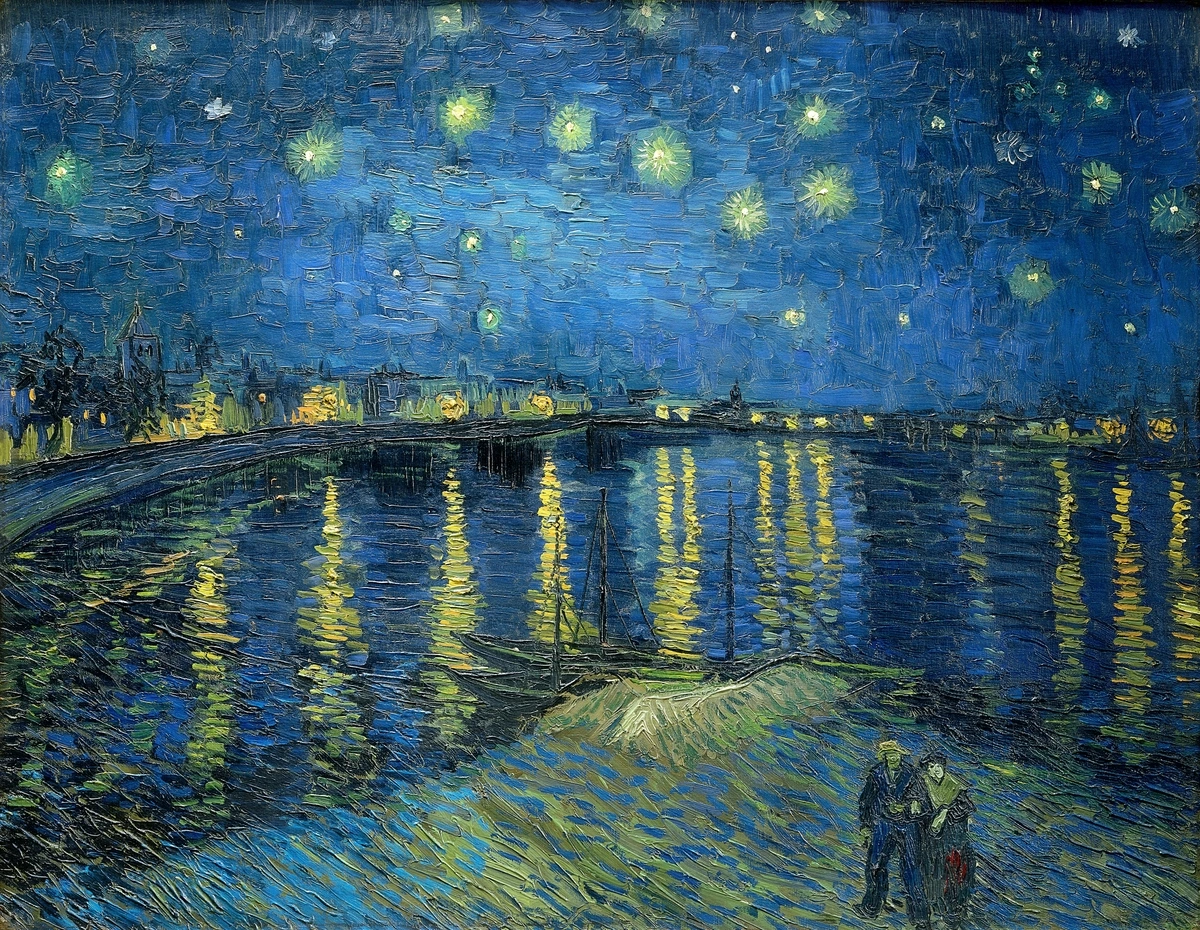
- Sharing the Experience: While art can be a deeply personal encounter, visiting a museum with friends, family, or a partner adds another layer. Discussing what you see, debating interpretations, or simply sharing a quiet moment in front of a powerful piece can deepen your connection to both the art and the people you're with. It turns contemplation into conversation, and sometimes, seeing art through someone else's eyes reveals something you might have missed.
The Titans: Unmissable Modern Art Hubs
So, now that we know why seeing it in person is essential, where are the absolute must-visit spots? While countless institutions house modern gems, some are simply legendary. Think of these as the essential pilgrimage sites for any modern art enthusiast. Stepping into these spaces feels like entering the heart of the modern art world.
1. Museum of Modern Art (MoMA) - New York City, USA
MoMA isn't just a museum; it's the foundational modern art museum for many. Walking through its galleries feels like stepping through the history of modern art itself. There's a certain buzz in the air, a sense of being surrounded by the very works that redefined art history. I remember the first time I saw Van Gogh's Starry Night here – it felt like the canvas was vibrating with energy, completely different from any reproduction I'd seen. It was like the paint itself was still alive, swirling with the same intensity Van Gogh must have felt. You could easily spend a full day here, maybe even two, depending on how deep you want to dive.
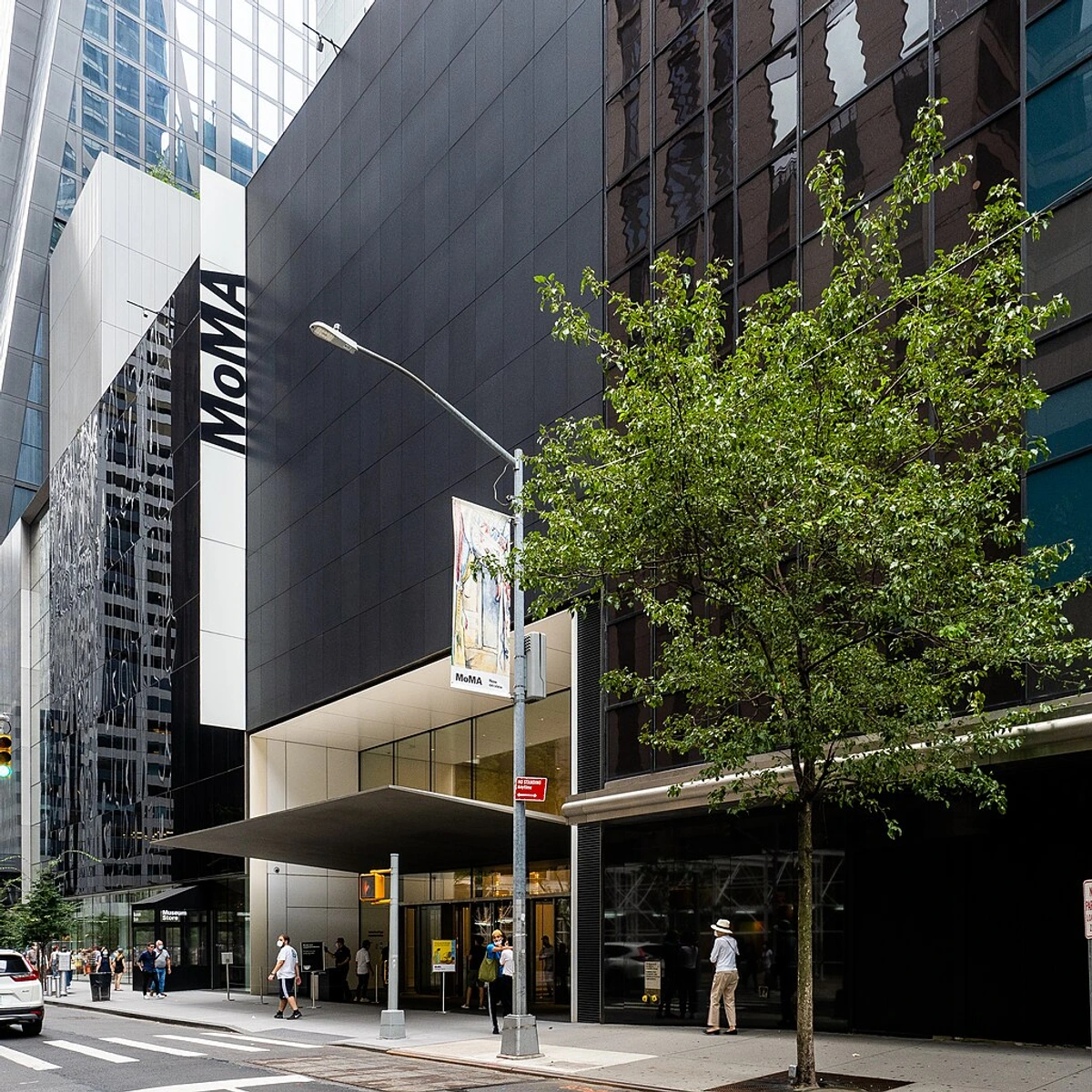
- Why It's Essential: Its collection is staggering. From Impressionism and Post-Impressionism (hello, Van Gogh's Starry Night!) through Cubism (Picasso's Les Demoiselles d'Avignon is a jaw-dropper, a truly revolutionary piece that shattered traditional perspective), Surrealism, groundbreaking Abstract Expressionism (Pollock, Rothko - explore our guide to Rothko), and iconic Pop Art (Warhol), MoMA has benchmark works from nearly every major movement. It's a comprehensive education in modernism under one roof.
- Iconic Works to Seek Out: Beyond the absolute blockbusters, look for Henri Matisse's vibrant Dance (I) (pure, unadulterated joy translated into color and form), Claude Monet's serene Water Lilies series (immersive and transportive), Frida Kahlo's powerful Self-Portrait with Cropped Hair (intensely personal and symbolic), and Jasper Johns' influential Flag (a simple image that challenged the definition of art). Each offers a unique window into a pivotal moment in modern art.
- The Vibe: Bustling, influential, and undeniably New York. It feels like the center of the modern art universe, a place where art history was made and continues to evolve. Stepping out onto the street afterwards, the city itself feels a little more vibrant, a little more... modern. It's a place that energizes you, even if the crowds can be intense. Don't miss the sculpture garden for a moment of calm.
2. Tate Modern - London, UK
Housed in a former power station on the Thames, Tate Modern is an architectural statement in itself. Its approach to displaying art is often thematic rather than strictly chronological, creating fascinating dialogues between works. The sheer scale of the Turbine Hall hits you first, a vast space that hosts incredible, often immersive, installations. Walking into that space always gives me a sense of awe at the possibilities of art on a grand scale, a feeling that anything could happen within those walls. I remember seeing a massive installation there that completely transformed my sense of space and sound – it wasn't just art to look at, it was art to be in. You could easily spend half a day or more here, especially if you linger in the Turbine Hall.
- Why It's Essential: While strong across the board, Tate Modern shines particularly bright in international modern art, with significant holdings in Surrealism, Minimalism, and Conceptual Art. It seamlessly blends modern and contemporary collections, showing how ideas flow and transform across time. It's a place that feels constantly in motion, reflecting the ever-changing nature of art.
- Iconic Works to Seek Out: Don't miss Salvador Dalí's Lobster Telephone (surreal and delightfully bizarre), Marcel Duchamp's provocative Fountain (a urinal that redefined what art could be – seeing it in person, even decades later, still feels like a cheeky challenge), Mark Rothko's meditative Seagram Murals (designed to create an immersive, contemplative experience), and powerful works by Louise Bourgeois. Keep an eye out for pieces by artists featured in our guides, like Georg Baselitz. The installations in the Turbine Hall are often temporary but always unforgettable.
- The Vibe: Industrial-chic, thought-provoking, and dynamically curated. The Turbine Hall installations are legendary, often challenging your perception of space and art itself. There's a constant hum of activity, a sense of being at the cutting edge. It feels like a place that encourages you to question and explore.
3. Centre Pompidou - Paris, France
You can't miss the Pompidou – its "inside-out" architecture with exposed pipes and escalators is as famous as the art inside. It houses Europe's largest modern art collection. Riding the external escalator offers a unique view of Paris before you even get to the art, setting a playful, unconventional tone. It feels like the building itself is inviting you to see things differently, which is perfect for modern art. It's a building that doesn't take itself too seriously, despite the serious art it holds. I remember reaching the top floor and stepping out onto the terrace, the panoramic view of Paris spread out below, and feeling like the city itself was a living, breathing work of art, perfectly complementing the creativity inside. Plan for at least half a day, more if you want to explore the library or temporary exhibitions.
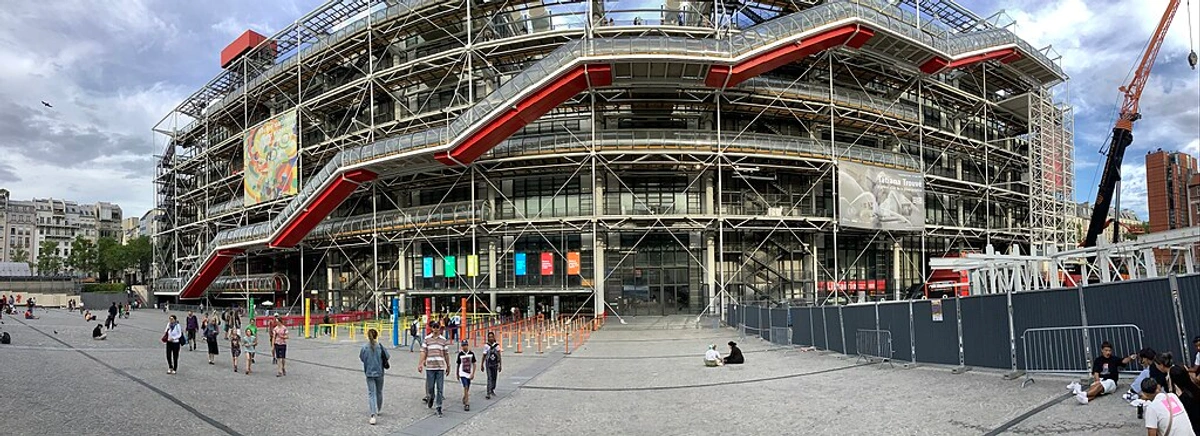
- Why It's Essential: Offers an unparalleled overview of 20th and 21st-century European art. It's particularly strong in Fauvism (check our Fauvism guide), Cubism (our Cubism guide is here), and Surrealism. The library and rooftop views are bonuses, making it a cultural hub, not just a museum. It's a place where you can easily spend a whole day, moving from intense art viewing to relaxed people-watching with a stunning backdrop.
- Iconic Works to Seek Out: Key works by Henri Matisse (like in our Matisse guide), Pablo Picasso, Wassily Kandinsky, Georges Braque, Joan Miró, and Jean Dubuffet are highlights. Look for Matisse's La Tristesse du Roi (a vibrant, late-career masterpiece) or Kandinsky's early abstract works that feel like visual music (seeing them here felt like stepping into a different dimension, a world built purely of color and form). The collection feels deeply rooted in the Parisian avant-garde.
- The Vibe: Quirky, vibrant, multidisciplinary (art, library, music), and undeniably Parisian. It's a place that embraces the unconventional, a true reflection of the city's artistic spirit. It feels alive and buzzing with creative energy.
Beyond the Big Three: Other Essential Stops
Moving beyond the absolute giants, these museums also boast world-class modern art collections that are absolutely worth the trip. They might not have the same global name recognition as the Titans, but they offer equally profound experiences and crucial pieces, sometimes providing a deeper dive into specific movements or showcasing modernism's global reach. Exploring these can feel like uncovering hidden treasures. You might also find significant modern collections in single-artist museums (like the Van Gogh Museum) or even university art museums, which often house surprising gems. These places can sometimes feel less overwhelming, allowing for a deeper connection with the art, a chance to breathe and absorb without the same level of crowd pressure.
4. Solomon R. Guggenheim Museum - New York City, USA
Frank Lloyd Wright's architectural masterpiece is almost as famous as the art it contains. The spiraling ramp offers a unique way to experience the collection, making the building itself a key part of the visit. It's a journey, not just a walk through rooms. I remember feeling a sense of continuous flow, the art unfolding as I ascended, almost like reading a visual novel. Just try not to get dizzy looking down! The building's curves and light wells create a truly unique viewing experience that sticks with you. You can typically explore the main collection in 2-3 hours, but allow more time for special exhibitions.
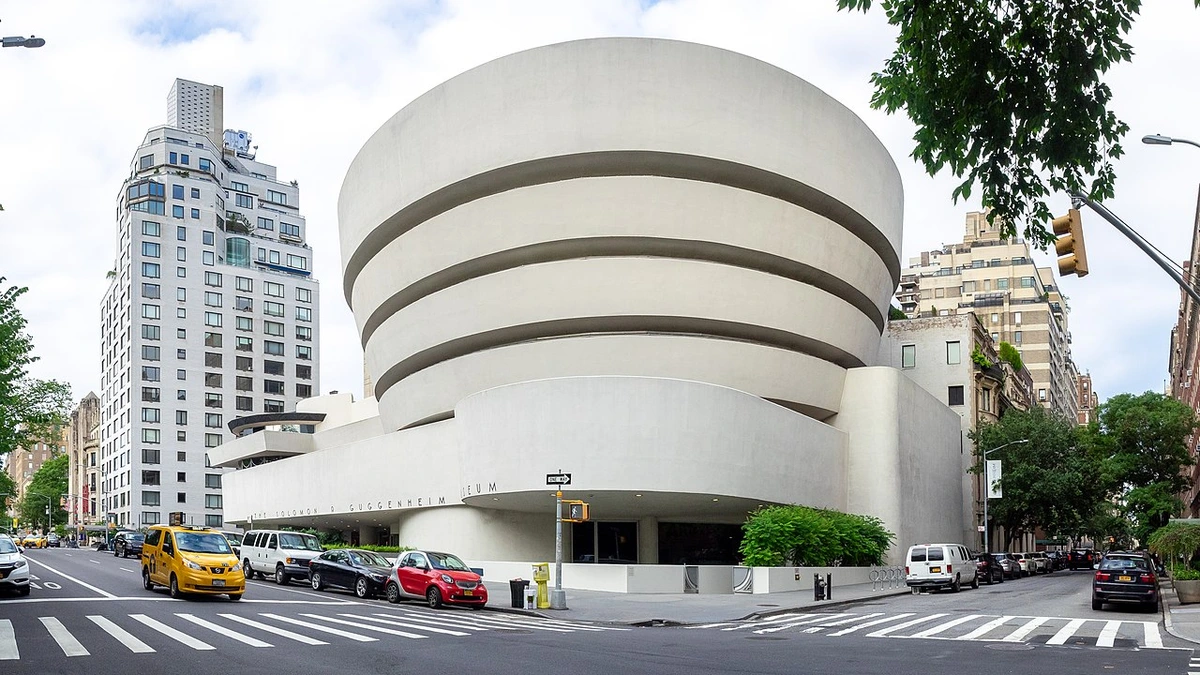
- Key Strengths: Exceptional collection of early modern masters, particularly Kandinsky and Klee. Strong holdings in Impressionism, Post-Impressionism, and early abstraction. It's a fantastic place to see the roots of abstract art, understanding the bold steps taken away from representation.
- Iconic Works to Seek Out: Wassily Kandinsky's Composition VIII is a must-see, feeling right at home in the dynamic space (seeing Kandinsky's work here, surrounded by the building's organic flow, felt like the art and architecture were in perfect harmony). Also look for works by Paul Klee and the early Picassos and Monets that show the transition into modernism. The building's unique layout often presents familiar works in entirely new ways.
- The Vibe: Sculptural, iconic, a continuous journey through art. The building itself is a work of art that constantly interacts with the collection, making the visit a holistic experience. It feels like stepping into a giant, elegant shell.
- Highlight: The building itself is a major highlight, offering a viewing experience unlike any other.
5. Art Institute of Chicago - Chicago, USA
While a comprehensive museum, the Art Institute boasts one of the world's finest collections of Impressionist and Post-Impressionist art outside of Paris. Stepping into their Impressionist galleries feels like entering a sun-drenched garden, a quiet escape from the bustling city outside. I could spend hours just in this wing, getting lost in the light and color, forgetting about the world for a while. It's a place where the paintings seem to glow from within. You could spend a full day here exploring various collections, but the modern wings alone could take 3-4 hours.
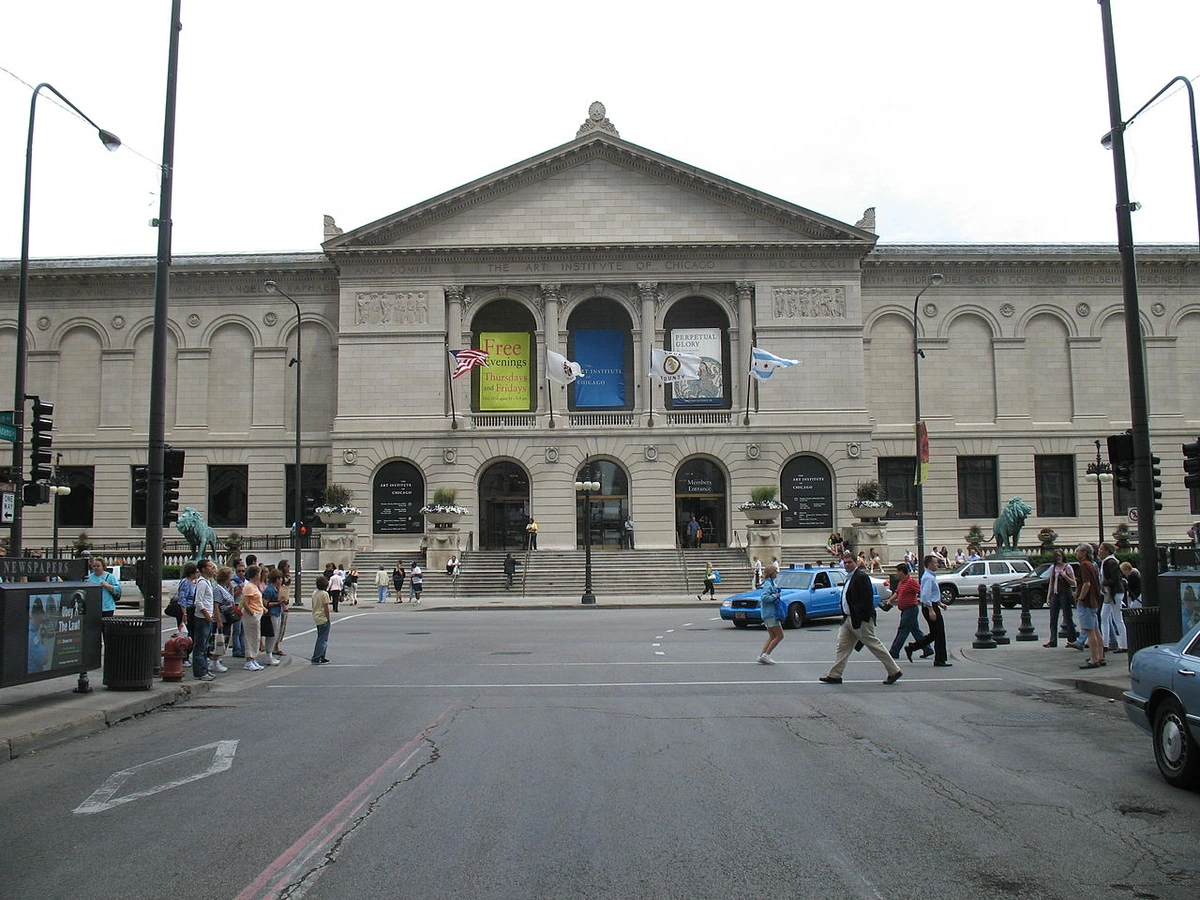
- Key Strengths: Simply breathtaking depth in Monet, Renoir, Caillebotte, and especially Seurat (home to A Sunday on La Grande Jatte – a Pointillism icon, see our Pointillism guide). Also significant European modern paintings and sculpture. It's a place where you can truly immerse yourself in the late 19th and early 20th centuries.
- Iconic Works to Seek Out: Georges Seurat's monumental A Sunday on La Grande Jatte is the star (standing in front of it, the sheer scale and the meticulous dots are mesmerizing – it feels like a whole world contained on one canvas), but also seek out Claude Monet's Haystacks series and Gustave Caillebotte's immersive Paris Street; Rainy Day. These pieces truly showcase the Impressionist and Post-Impressionist revolutions, capturing fleeting moments and the changing urban landscape.
- The Vibe: Grand, scholarly, a treasure trove for lovers of late 19th/early 20th-century art. It feels like a classic, world-class institution, solid and reassuring in its depth and quality. It's a place that rewards slow, careful looking.
- Highlight: The unparalleled Impressionist and Post-Impressionist collection, particularly Seurat's masterpiece.
6. Museo Nacional Centro de Arte Reina Sofía - Madrid, Spain
Home to Spain's national collection of 20th-century art, the Reina Sofía's crown jewel is undoubtedly Picasso's monumental Guernica. The room dedicated to Guernica is a powerful, almost reverent space, demanding quiet contemplation. Seeing it in person is a visceral experience; the sheer scale and raw emotion are overwhelming in the best possible way. It's a piece that silences you, forcing you to confront the horrors it depicts. I remember the quiet intensity of the room, the way people spoke in hushed tones, and feeling the weight of history pressing down. You could focus on Guernica and the Spanish masters in 2-3 hours, but the full collection warrants more time.
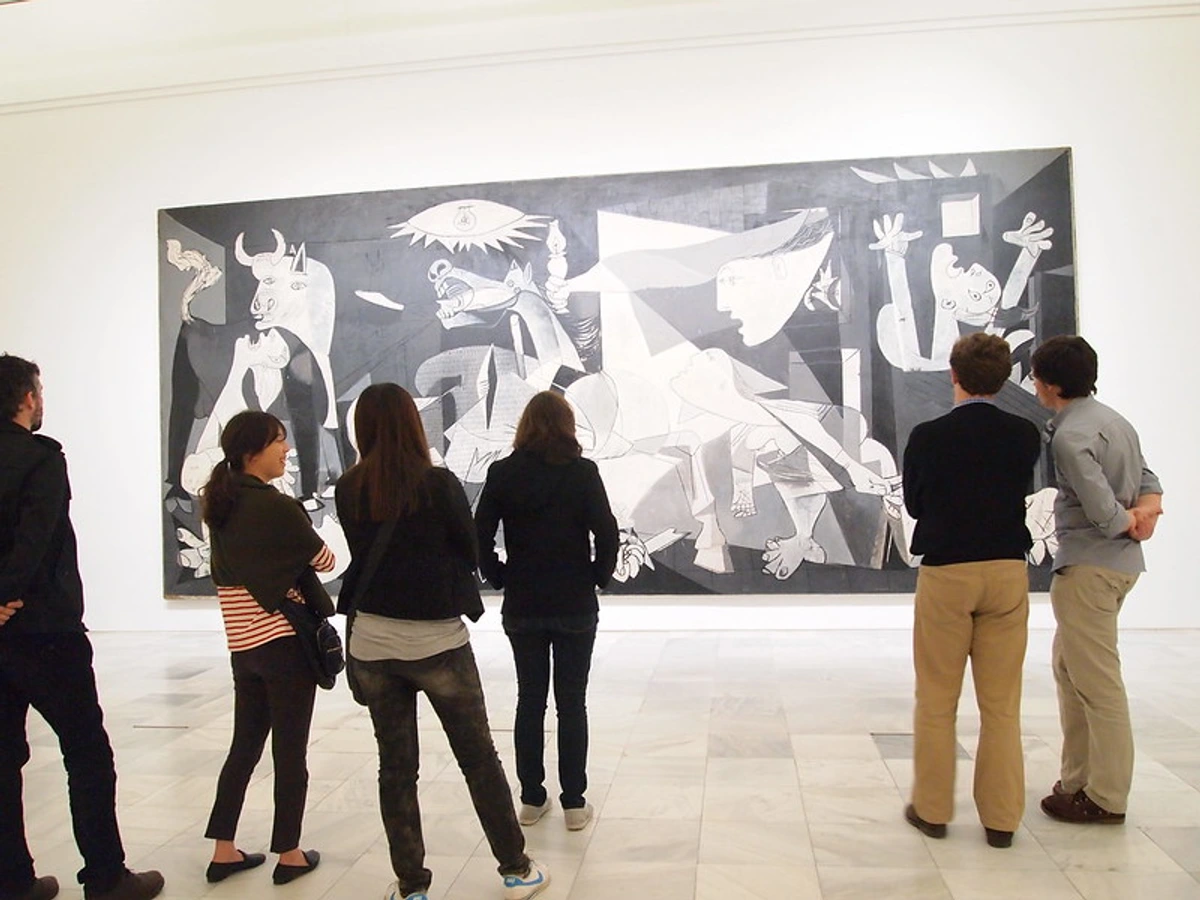
- Key Strengths: The definitive place to see Spanish modern masters, especially Picasso, Dalí, and Miró. Guernica alone is worth the visit, offering a powerful anti-war statement. The collection also provides crucial context for Spanish art within the broader European movements, showing how these artists engaged with and diverged from their contemporaries.
- Iconic Works to Seek Out: While Guernica is the main draw, spend time with Picasso's related studies, Salvador Dalí's surreal Face of the Great Masturbator (as bizarre and fascinating as the title suggests), and Joan Miró's playful yet profound works. These artists defined Spanish modernism, each in their own unique voice. The collection feels intensely personal to Spain's tumultuous 20th century. Seeing Dalí's work here, in his home country's major modern museum, felt like understanding a piece of his complex identity.
- The Vibe: Historically significant (housed partly in a former hospital), focused, and essential for understanding Spanish modernism. It feels like a place of deep historical and artistic importance, a repository of national memory and creative genius. It's a museum that feels both grand and deeply human.
- Highlight: The unparalleled experience of seeing Picasso's Guernica.
Digging Deeper: Specialized Collections & Global Gems
Beyond the most famous institutions, the world is full of incredible museums offering deep dives or unique perspectives into the world of modern art. This list barely scratches the surface! These are places that offer deep dives into specific areas or movements, or showcase the global reach of modernism beyond the traditional Western centers. Exploring these can feel like uncovering hidden treasures. You might also find significant modern collections in single-artist museums (like the Van Gogh Museum) or even university art museums, which often house surprising gems. These can sometimes offer a more intimate viewing experience.
7. Stedelijk Museum (Amsterdam, Netherlands)
A major player, especially strong in De Stijl, Cobra, and postwar European and American art. It has a fantastic collection of Mondrian and Malevich. A must-visit if you're exploring art cities in the Netherlands. I remember being struck by the bold simplicity of the De Stijl works here; they felt so revolutionary for their time, almost like a visual language being invented before your eyes. The contrast between the historic building and the sleek, modern 'bathtub' extension is a visual metaphor for the art inside. You could spend 2-3 hours here comfortably.
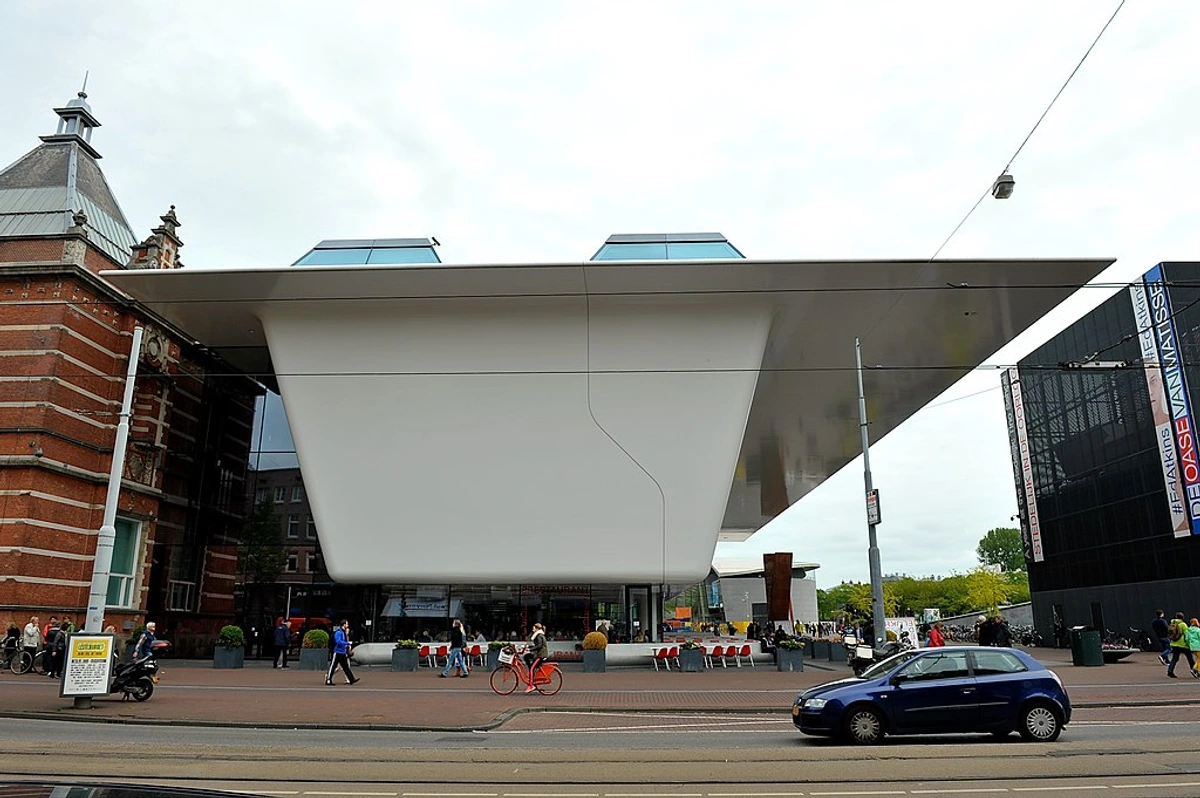
- Key Strengths: Deep holdings in De Stijl, Cobra, and post-war European/American art.
- Iconic Works: Piet Mondrian's Composition No. III, with Red, Blue, Yellow, and Black (a prime example of De Stijl purity), works by Malevich and Karel Appel. Seeing Mondrian's work here feels like understanding the logical conclusion of a radical idea.
- The Vibe: Sleek, modern extension contrasting with the historic building, dynamic programming. It feels like a place that respects history but is firmly focused on the present and future, with a clean, airy feel.
- Highlight: Strong focus on design and applied arts alongside fine art, offering a broader view of modern creativity.
8. SFMOMA (San Francisco, USA)
Impressive collection of modern and contemporary art, particularly strong in photography and West Coast artists. The building itself is a striking piece of architecture, expansive and airy, a perfect backdrop for large-scale contemporary works. It feels like a museum built for the future, reflecting the innovative spirit of the Bay Area. I remember the feeling of light and space inside, making even large, imposing sculptures feel approachable. Allow 3-4 hours to explore the diverse collection.
- Key Strengths: Excellent photography collection, strong in Minimalism, Conceptual Art, and West Coast artists.
- Iconic Works: Significant works by artists like Richard Serra and Ellsworth Kelly, and a deep photography archive. The Serra sculpture I saw here felt like it warped the space around it, a truly physical experience.
- The Vibe: Expansive, airy, with a focus on diverse media. It captures the innovative spirit of the Bay Area, feeling open and accessible.
- Highlight: The depth of the photography collection and the museum's commitment to contemporary art.
9. Fondation Beyeler (Basel, Switzerland)
A stunning museum integrating art, nature, and architecture, with a high-quality collection spanning modern classics to contemporary giants. Visiting feels like a peaceful retreat focused purely on experiencing the art and its surroundings. It's a truly serene art-viewing experience, designed to soothe the soul as much as stimulate the mind. I remember the way the natural light interacted with the Rothko paintings here – it was a truly transcendent experience, making the colors feel incredibly alive. You can easily spend 2-3 hours here, enjoying both the art and the setting.
- Key Strengths: Exceptionally high-quality collection in a beautiful, intimate setting.
- Iconic Works: Exceptional collection of Rothko, Monet, and Picasso. The Rothko room here is particularly renowned for its contemplative atmosphere.
- The Vibe: Serene, minimalist, harmonious blend of art and landscape. It encourages quiet contemplation, a gentle space for powerful art.
- Highlight: The perfect synergy between the architecture, the art, and the surrounding nature.
10. Museum Ludwig (Cologne, Germany)
Holds one of the most significant Pop Art collections outside the US, plus extensive Picasso holdings and German Expressionism. If you love Warhol, this is a must-see. It's a jolt of energy after some of the earlier modern movements, loud and unapologetic, just like Pop Art should be. I remember the sheer volume of Pop Art here – it felt like stepping into a vibrant, slightly chaotic time capsule of the 60s. You could spend 2-3 hours focusing on the modern collection.
- Key Strengths: World-class Pop Art collection, strong German Expressionism and Picasso.
- Iconic Works: Numerous works by Andy Warhol (including Campbell's Soup Cans), Roy Lichtenstein (like Whaam!), and German Expressionists like Ernst Ludwig Kirchner. Seeing so many iconic Pop pieces together is a real experience.
- The Vibe: Energetic, focused on key 20th-century movements. It feels direct and impactful, a celebration of the bold and the popular.
- Highlight: The depth and breadth of the Pop Art collection.
11. Musée d'Orsay (Paris, France)
While primarily focused on 1848-1914 (Impressionism, Post-Impressionism), it provides crucial context for the birth of modernism. Housed in a breathtaking former railway station, the building is as much a star as the art. It's the perfect bridge from the academic past to the modern future, a grand space filled with light and revolutionary paintings. I remember looking up at the giant clock face inside and feeling the weight of time, thinking about how much art had changed since this building was a bustling train station. Allow 3-4 hours to fully appreciate the collection and the architecture.

- Key Strengths: Unparalleled collection of Impressionist and Post-Impressionist art.
- Iconic Works: Claude Monet's Poppy Field, Pierre-Auguste Renoir's Bal du moulin de la Galette (full of life and movement), works by Degas, Cézanne, and Van Gogh. Seeing the sheer volume of masterpieces from this pivotal era is breathtaking.
- The Vibe: Grand, atmospheric, a perfect bridge from academic art to modernism. The building itself is a stunning backdrop, making the art feel both historical and vibrantly alive.
- Highlight: The stunning architecture of the former railway station combined with the masterpieces it houses.
12. National Museum of Modern Art, Tokyo (MOMAT)
While many major modern collections are in the West, MOMAT offers a crucial perspective on Japanese modern art alongside Western masters. It's a chance to see how global movements intersected with local traditions, reminding you that modernism wasn't just a European or American phenomenon. It offers a unique dialogue between East and West. I remember seeing how Japanese artists interpreted Western styles like Fauvism or Surrealism – it wasn't just imitation, but a fascinating cultural translation. You could spend 2-3 hours here.
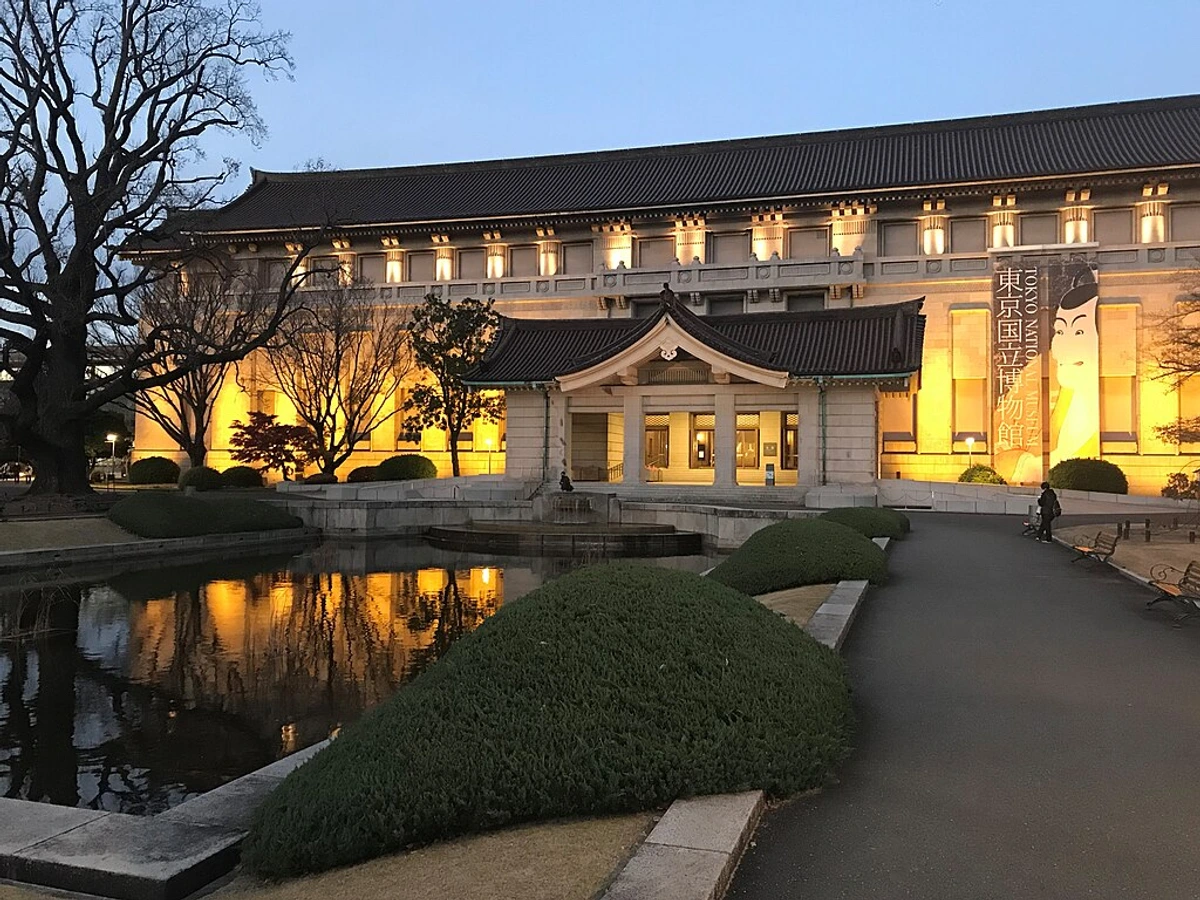
- Key Strengths: Comprehensive collection of Japanese modern art, plus significant Western works.
- Iconic Works: Works by Japanese artists like Yokoyama Taikan and Kishida Ryusei, alongside pieces by Picasso and Matisse. Seeing these side-by-side offers fascinating insights.
- The Vibe: Thoughtful, bridging Japanese and Western modernism. It feels like a place of quiet contemplation and cross-cultural exchange.
- Highlight: The unique opportunity to explore Japanese modernism in depth.
13. Museo de Arte Latinoamericano de Buenos Aires (MALBA) - Buenos Aires, Argentina
A vital institution dedicated to Latin American art from the early 20th century to the present. It houses iconic works that are foundational to understanding modernism in the region, often with a distinct political or social edge. It's a vibrant space that celebrates the rich artistic heritage of Latin America. I remember the energy of the place, the bold colors and powerful narratives feeling deeply connected to the continent's history. You could explore the collection in 2-3 hours.
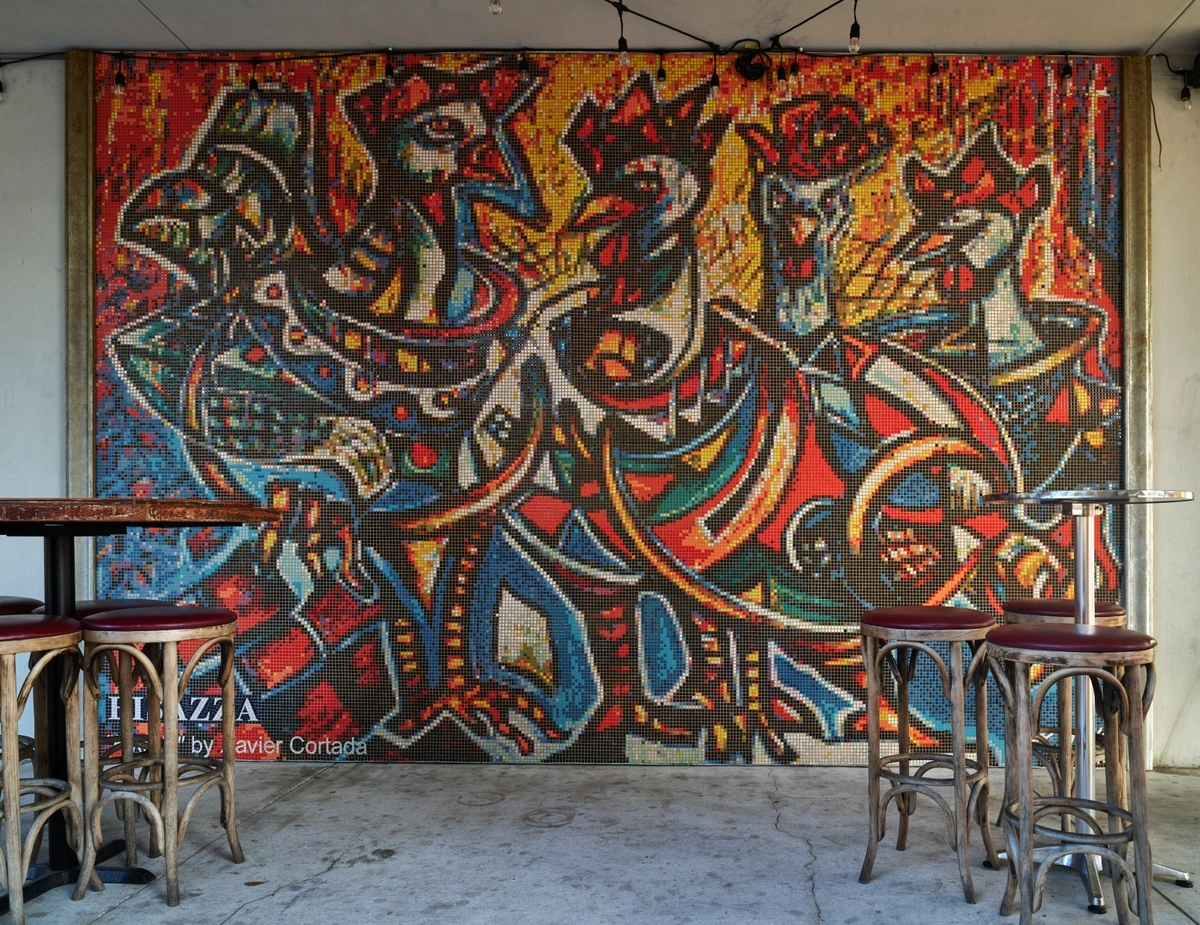
- Key Strengths: Definitive collection of 20th-century Latin American art.
- Iconic Works: Key works by Frida Kahlo (Self-Portrait with Monkey is a highlight), Diego Rivera, Tarsila do Amaral (Abaporu is a national treasure), and Xul Solar. These are foundational pieces for understanding the region's artistic identity.
- The Vibe: Dynamic, passionate, and deeply rooted in regional identity. It feels like a celebration of Latin American creativity.
- Highlight: The essential collection for understanding Latin American modernism.
14. National Gallery of Victoria (NGV) - Melbourne, Australia
While its collection spans many periods, the NGV has significant holdings of international and Australian modern and contemporary art. It offers a chance to see global movements through an Australian lens and discover the unique contributions of artists from down under. It's a comprehensive museum that connects local creativity to the wider world. I remember being surprised by the strength of the Australian modern collection, seeing how artists here engaged with global trends while developing their own distinct voice. You could spend 2-3 hours focusing on the modern and contemporary sections.

- Key Strengths: Strong collections of Australian modernists and post-war international art.
- Iconic Works: Look for works by Sidney Nolan (his Ned Kelly series is iconic) or Arthur Boyd alongside global names. It's fascinating to see how Australian artists responded to movements like Abstract Expressionism or Pop Art.
- The Vibe: Broad, accessible, and a key cultural hub for Melbourne. It feels welcoming and diverse in its offerings.
- Highlight: The opportunity to see international modernism alongside significant Australian works.
You can explore more top institutions in our guides to the best museums worldwide or the best art galleries, including best galleries in Asia.
Planning Your Modern Art Pilgrimage
Okay, feeling inspired? A few practical thoughts from someone who's gotten lost, missed opening hours, and suffered serious museum fatigue (it's a real thing!). Here's what I've learned the hard way, often through slightly embarrassing trial and error (like ending up in the gift shop three times before finding the exit, or realizing the one piece I had to see was on loan). Don't be like me!
- Check Websites Religiously: Always look up opening hours, current exhibitions (they rotate!), and ticket info online before you go. Booking ahead is often essential, especially for major museums or popular exhibitions. Don't just show up hoping for the best – I've made that mistake! Nothing is worse than arriving at the door only to find it's closed on Tuesdays, or you needed a timed ticket you didn't buy. Also, check for temporary exhibitions – they can be highlights!
- Know the Highlights: Museum collections are vast. Trying to see everything is a recipe for exhaustion (and sore feet). Check the museum's website for their collection highlights or a map of must-see works. This helps you prioritize if you're short on time. It's better to see a few things well than everything poorly.
- Don't Rush: These places are huge. Trying to "do" MoMA in two hours is like trying to speed-read War and Peace. Give yourself ample time, maybe focus on specific wings or movements. It's better to deeply experience a few galleries than sprint through everything. Your feet (and your brain) will thank you.
- Take Breaks: Museum fatigue is real! Find a cafe, sit in a sculpture garden, rest your eyes and feet. My secret weapon is finding a quiet bench and just people-watching for a bit, or finding a less crowded corner to just sit and look at one piece for a long time. Sometimes the quietest spots offer the deepest connection. And yes, sometimes that break involves a slightly overpriced museum coffee.
- Consider Guided Tours or Audio Guides: Sometimes a little guidance can unlock deeper understanding and make the experience richer. It's like having a knowledgeable friend whisper insights in your ear, pointing out things you might otherwise overlook.
- Utilize Museum Apps and Digital Resources: Many museums have excellent apps that offer maps, audio guides, and information about the art. Download them before you go, but also use them during your visit for navigation, scanning labels for more info, or even finding that elusive restroom. It can save you from constantly pulling out a paper map and looking utterly lost (though sometimes that's part of the adventure).
- Check the Photography Policy: Planning to snap some pics? Museum photography policies vary wildly. Some allow non-flash photography everywhere, others restrict it in certain galleries or for specific artworks, and some ban it entirely. Check their website beforehand to avoid disappointment (or getting politely, or not-so-politely, told off by a security guard – speaking from experience!).
- Consider Cost and Accessibility: Entry fees can add up, but many museums offer free admission days or hours (check their website!). Considering a museum membership can be great value if you plan multiple visits. Also, always check the museum's website for detailed accessibility information regarding ramps, elevators, and services to ensure your visit is smooth. Planning ahead is key for a stress-free visit.
- Go Beyond the Obvious: While you're in these amazing art cities, explore smaller local galleries too! You might find hidden gems or emerging artists. It's a different vibe, often more intimate, and you might even find a piece you love enough to buy. Discovering a local scene can be just as rewarding as visiting a famous institution.
- Budget for More Than Just Tickets: Consider the cost of food, transport, and yes, maybe that exhibition catalog you suddenly need. Most large museums have their own cafes or restaurants, ranging from quick bites to more formal dining. The surrounding neighborhoods of major museums in big cities also usually offer a wide variety of dining options at different price points. A quick search on a mapping app will give you plenty of choices. Sometimes grabbing a quick coffee in the museum cafe is the perfect way to combat museum fatigue! Just try not to spill it on a masterpiece.
Frequently Asked Questions (FAQ)
Q1: Which museum is the absolute best for Modern Art? A: Tough call! MoMA (New York) arguably has the most iconic and comprehensive overview. But Tate Modern (London) offers a brilliant international perspective, and the Centre Pompidou (Paris) is unmatched for European depth. It really depends on your specific interests and what movements you're most excited about! There's no single "best," only the best for you. Maybe start with the one closest or featuring artists you already love.
Q2: Where should I go specifically for Impressionism? A: The Art Institute of Chicago has an incredible collection. In Paris, the Musée d'Orsay is the destination for Impressionism and Post-Impressionism, covering the period leading right up to early modernism. MoMA and the Guggenheim also have important works. If Impressionism is your passion, Paris and Chicago are essential stops. Prepare to be bathed in light and color!
Q3: Where can I see Picasso's Guernica? A: Ah, the Guernica question! Seeing it is truly something else. Picasso's monumental anti-war masterpiece is housed at the Museo Nacional Centro de Arte Reina Sofía in Madrid, Spain. It's a powerful, unforgettable experience that dominates the space it's in. You can learn more about Picasso here. Be prepared for a profound emotional impact.
Q4: What about Van Gogh? Where are his most famous works? A: Major Van Gogh works are spread out. MoMA (New York) has The Starry Night. The Van Gogh Museum (Amsterdam) has the largest collection, including Sunflowers and The Potato Eaters. The Art Institute of Chicago has The Bedroom. The Musée d'Orsay (Paris) also holds significant pieces. Our Van Gogh guide delves deeper into his life and where to find his art. It's a bit of a treasure hunt!
Q5: Are there great modern art collections outside these huge famous museums? A: Absolutely! Many regional, university, and private foundation museums have stellar modern collections (like the Beyeler Foundation mentioned earlier). Don't overlook museums in cities like Philadelphia, Amsterdam (Stedelijk), Basel, or Cologne. Also, consider institutions in Latin America (like MALBA) or Australia (like NGV). Always check what's local or near your travel destinations. Sometimes smaller galleries offer hidden gems and a more intimate viewing experience.
Q6: What's the best time of day/week to visit to avoid crowds? A: Generally, weekdays are less crowded than weekends. Early mornings right after opening or late afternoons before closing can also be quieter. Avoid major holidays and school breaks if possible. Check the museum's website for specific recommendations or peak times. Going at off-peak hours can make a huge difference to your experience, allowing for more space and quiet contemplation.
Q7: Are these museums accessible? A: Most major modern art museums are designed to be accessible, with ramps, elevators, and accessible restrooms. However, it's always best to check the specific museum's website or contact them directly for detailed information regarding accessibility features and services to ensure your visit is smooth. Planning ahead is key for a stress-free visit.
Q8: Do they offer guided tours or audio guides? A: Many major museums offer guided tours (sometimes free, sometimes for a fee) and audio guides (often for rent). These can provide valuable insights into the collection and specific artworks, helping you understand the context and significance. Check the museum's website for availability and pricing. An audio guide can be a great way to get deeper insights without needing to join a group.
Q9: What if I just don't 'get' modern art? A: You are absolutely not alone! That initial feeling of confusion is incredibly common, and honestly, it's part of the journey. Don't feel pressured to understand every piece or like you're failing if it doesn't immediately click. Try approaching it differently: instead of asking "What is this supposed to be?", ask "How does this make me feel?" or "What materials did the artist use and why?" Read the wall text, listen to an audio guide, or just sit with a piece for a while and let your eyes wander. Sometimes the connection comes later, or it comes from a piece you least expect. It's okay to be challenged, and it's okay if some pieces just aren't for you. The goal is the experience and the exposure, not passing a test! It's about finding your own connection, even if it's just appreciating the boldness of the attempt.
Final Thoughts: More Than Just Looking
Visiting a world-class modern art museum is more than just ticking off famous names. It's about immersing yourself in a period of intense creativity and change. It’s about standing where others have stood, feeling that connection across time to an artist's vision. It can challenge you, delight you, maybe even confuse you a little (that’s okay!), but it will definitely leave an impression.
For me, seeing these works in person is a vital part of my own artist's journey. It's a reminder of the bold steps taken by those who came before, the sheer effort and vision required to create something new. I remember seeing the texture in a Van Gogh up close and thinking about the physical act of applying paint, or standing before a Rothko and pondering the emotional power of color fields – ideas that directly influence how I approach my own canvases and make art. It fuels my own desire to create and reminds me why I started selling my own art for sale – to share a piece of that creative energy. Sometimes I wonder if the artists themselves would be amused or bewildered by the crowds staring at their work centuries later. Probably a bit of both. Maybe they'd just be happy someone is still looking, really looking.
Seeing these masterpieces might even spark your own creative journey or inspire you to bring more art into your life or understand the artist's path. Whether you plan an epic multi-city tour or just visit one great institution, diving into the world of modern art firsthand is an adventure every art lover deserves. And hey, maybe you'll even find a piece that gives you that same weird, wonderful jolt. What was the first piece of modern art that really grabbed you, or which museum is now at the top of your wishlist?




